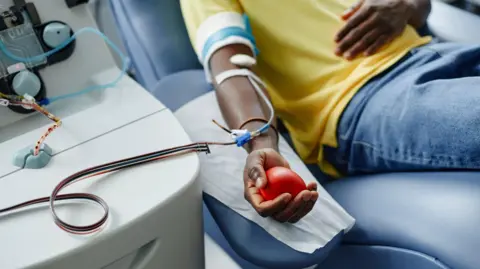In a groundbreaking move, Australia has announced the lifting of restrictions that previously barred sexually active gay and bisexual men from donating blood and plasma. This change marks a significant step forward in addressing decades-long discrimination against individuals within the LGBTQIA+ community. The shift follows similar adjustments made recently in the United Kingdom and the United States, reflecting a global trend towards more inclusive blood donation policies. The new regulations are set to come into effect on July 14, 2025, and are poised to expand the donor pool significantly, with an estimated increase of approximately 625,000 potential donors in Australia.
Historically, rules prohibiting blood donation from sexually active gay and bisexual men were implemented as a precautionary measure aimed at reducing the risk of HIV transmission through blood products. This approach involved imposing stringent evaluations that deemed certain groups, including men who have sex with men (MSM), as high-risk donors. However, under the revised policy, Australia will become the first nation globally to eliminate all sexual activity-based restrictions specifically for plasma donations, according to Lifeblood, the national blood donation service.
The decision to amend these policies has been met with enthusiasm from advocates and medical professionals alike. Rodney Croome, spokesperson for the Let Us Give campaign, which championed the regulatory changes, emphasized the critical importance of this decision in saving lives. He stated, “Australian lives will be saved by this overdue and important decision,” highlighting the positive impact on community health.
Dr. Jo Pink, Lifeblood’s Chief Medical Officer, heralded the regulatory changes as a pivotal milestone in Australian healthcare. She explained that ensuring blood safety remains a top priority. Nevertheless, the previous donor criteria caused distress within the LGBTQIA+ community, fostering stigma and reinforcing feelings of exclusion. The new rules aim to dismantle this stigma by encouraging wider participation in blood and plasma donation initiatives.
Under the updated regulations, the previous three-month celibacy requirement for men and transgender women who have sexual interactions with men will be rescinded. Instead, individuals in monogamous relationships lasting six months or longer will be eligible to donate blood, regardless of their gender or sexual orientation. Importantly, Lifeblood will no longer pose the specific question regarding sexual activity among men, focusing instead on whether donors have engaged in anal sex with new or multiple partners. If the answer is affirmative, those donors will need to wait three months before they can contribute blood but will still be allowed to donate plasma.
Additionally, individuals utilizing the HIV prevention drug PrEP will gain eligibility to donate plasma, though they will remain barred from donating blood. Remaining restrictions aim for the highest possible safety standards, especially concerning individuals living with HIV. The updated rules will ensure that only HIV-positive individuals and those with HIV-positive partners cannot donate plasma.
The research backed by Lifeblood and the University of New South Wales’ Kirby Institute indicated that the new regulations would not compromise the safety of blood and plasma supplies. Plasma undergoes an advanced pathogen inactivation process, effectively filtering out viral and bacterial infections, thus significantly mitigating possible transmission risks to recipients. With the global demand for plasma at an unprecedented high, these changes are expected to enhance supply, offering a boon for Australia’s healthcare system.
However, critics, such as researcher Sharon Dane of Let Us Give, have noted that while the revised policies reflect progress, they do not fully align with best practice standards seen globally. She highlighted that countries like the UK, Canada, and the US only require a three-month waiting period for monogamous relationships related to anal sex, rather than the six months stipulated by Lifeblood.
In conclusion, the lifting of the blood and plasma donation ban for gay and bisexual men in Australia signifies a transformative leap towards inclusivity in blood donation practices. While the changes brought forth by Lifeblood illustrate a commitment to fostering a more equitable system, ongoing discussions and evaluations will be vital to ensuring that Australian blood donation regulations align with international benchmarks for safety and inclusivity.



